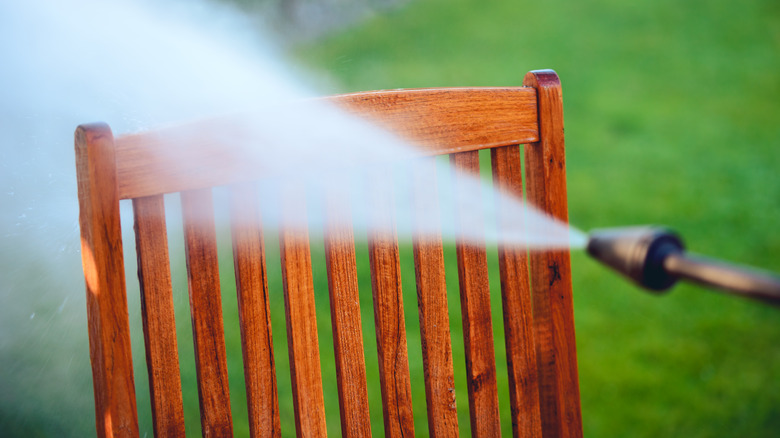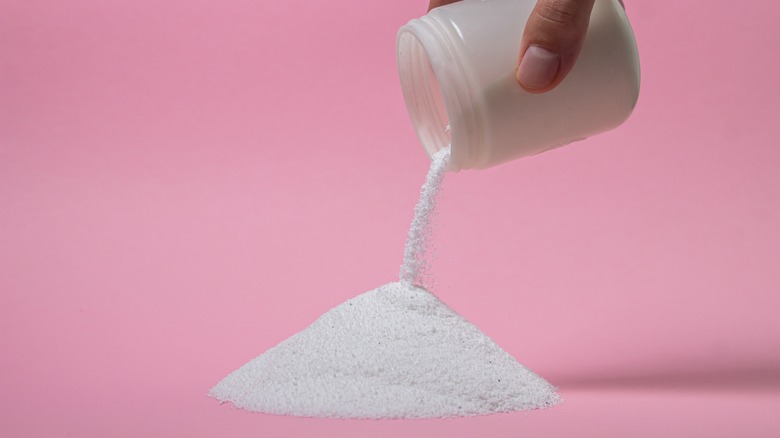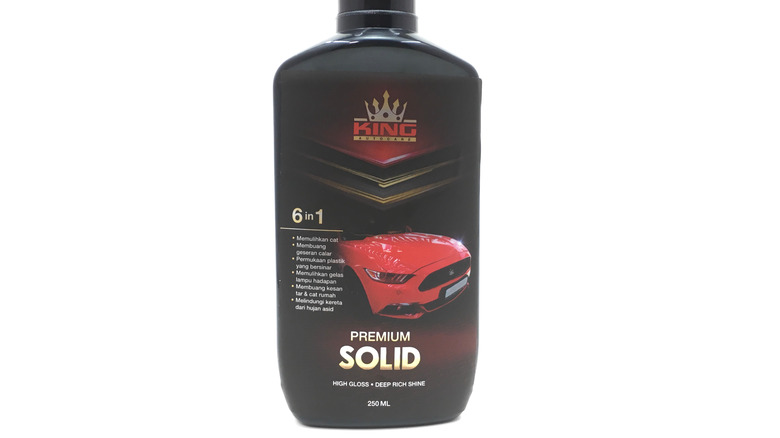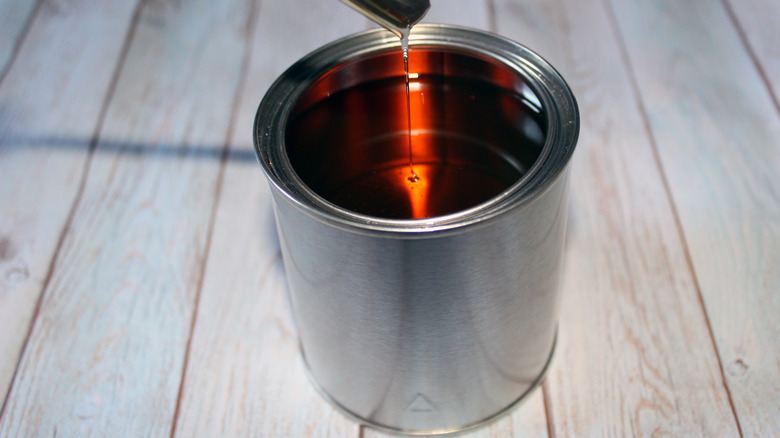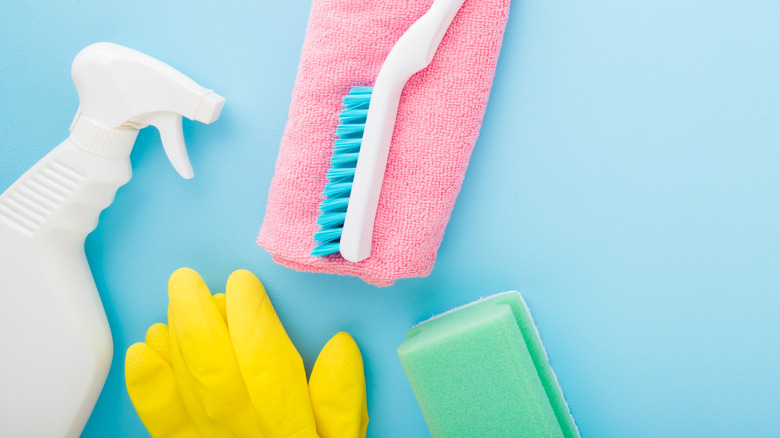How To Clean Resin Furniture
Furniture pieces are an integral part of everyone's lives, and we invest a lot in ensuring they are made to suit preferences, including the material types. In addition, a lot of consideration goes into selecting the specific furniture material that'll fit into any space with fewer maintenance requirements. So whether you're a busy parent, student, or business owner looking for something that'll provide comfort and beauty aside from wood and plastic furniture, your best bet is resin furnishings.
According to Corrosionpedia, resin is a natural, organic liquid compound secreted by plants for protection during damage. With research, scientists found a better use for this liquid by mixing it with chemical compounds to form several materials like adhesives, perfumes, plastics, and even toys, Artful Parent notes. Resin is also great for décor and furniture materials.
You get to see different designs, shades, and shapes of resin furnishing items. So, if you have some at home or would rent for an event soon, it's important to clean them and get them glowing for that space. There are several ways to achieve this, and you'll get to discover a few simple techniques in this article.
Water and detergent for the win
Before searching and spending a lot on those expensive cleaning agents, you need to try the simple yet efficient water-detergent mix that works like magic on resin items. Water alone may not solve the problem here, especially when there's a build-up on the furniture's surface per Decor Outdoor. Begin the process by placing the items in an outdoor space. Before proceeding, remove all cushions to avoid soaking water during washing. Water easily damages them, and drying them could be quite overwhelming.
Measure 1 teaspoon of detergent in a 0.5-gallon of warm water and apply it to the surface of the furniture gently by using a clean cloth or soft sponge. This will help reduce the toughness of the stains on the surface of the furniture, Tips Bulletin says. Focus on the nooks and crannies, especially for designs that may hide dirt perfectly. Leave the furnishings soaked with the cleaning agent for about 15 minutes before rinsing off with water. It is essential to wipe off the soap well because residue agents can damage the furniture.
The best part about this method is that it can be repeated till you're satisfied with the overall outcome. Then, after rinsing off, leave the items to dry completely in the sun for about two hours.
Try dishwashing liquid and bleach
The growth of mildew and mold on your resin items can cause semi-permanent stains on the surface. A simple trick to restoring the beauty of your furniture is by cleaning it with dishwashing soap and bleach. This method is a better option when the stains on the furniture are tougher and more pronounced. Interestingly, you don't need to break the bank with this approach.
Before you make use of that bleach, you should note a few safety guidelines. Most bleaches contain ammonia, which is harmful when mixed with dishwashing soaps, according to the Washington State Department of Health. With this, it's important to ascertain your bleach is free from ammonia before using it.
Combine the soap and ammonia-free bleach thoroughly and add warm water to the mixture. Apply the solution evenly to the furniture surface by using a soft cloth or sponge and leave it for a while before rinsing it off thoroughly with water. However, ensure you only leave the mixture to sit for a short while because the chemicals can cause a quick discoloration to your furniture surface when it overstays.
In case you still notice dirt particles after rinsing, The Washington Post says that you should repeat the process but apply little pressure when spreading the mixture this time. Thoroughly drying your resin furniture is the next best thing to keep it in a good state.
Buff with automotive paste wax
Resin furniture tends to lose its sheen right after washing or even just from sitting outside after many days. Mind you, it is not dirty; it's just not spiffy and shiny as it should be. The curse of wear and tear. The experts at Decor Outdoor note that you can always restore your old resin furniture by using a rather unconventional product: automotive paste wax.
While most people would avoid using automotive products on wood (because automotive paste wax is designed to improve the appearance of car paint or other such surfaces), Decor Outdoor recommends it on resin items. According to them, it'll restore the furniture's shine: Whenever your resin furniture begins to look dull, they recommend applying a little to a towel or microfiber cloth and spreading the product on it. For finishing touches, buff the resin furniture with a new dry cloth, and you'd be good to go.
Apply a little bit of alkyd-resin paint
If you have had your resin furniture for a while, either as a 20-year-old wedding present or a family heirloom, or if it came with your apartment, you might notice a couple of chips and scratches in certain places. The only consolation for those unsightly chips is that you can repair them, and boy, aren't we glad there is a fix?!
Fixing anomalies on your furniture is a sure way to leave pleasant impressions in your guests' minds and ensure the items last longer. After cleaning your resin furnishings with either the bleach solution or the dishwashing soap solution, the experts at SFGate say that you should apply a bit of alkyd-resin paint to cover the chips and scratches on it.
As a safe alternative, since alkyd-resin paint has properties that shield its host from the elements, you may want to consider coating the whole of your furniture twice a year or so.
Everyday microfiber dab, occasional sandpaper, and epoxy glue
As much as the tips that we've recommended above might work fine for heavily soiled resin furniture, facts remain that consistent cleaning is always better. To ensure that your resin furniture is in peak condition, day in and day out, you should make a habit of cleaning it with a microfiber cloth regularly.
The experts at Nufurn Commercial Furniture Solutions say that you should run the microfiber cloth through the furniture surface in a circular motion until it's straight up clean. Abrasive surface cleaners are quite inadvisable because you risk scratching out your furniture and defeating the entire purpose of keeping it clean.
For scratches, Signature Hardware says to grit the scratch away by using a piece of finely made sandpaper. Where that doesn't work, you could always use epoxy. To do this, HomeSteady says to get 2/2 epoxy glue, apply to the scratch, and once mildly dry, simply peel away the excess with a razor blade. Done and dusted.
